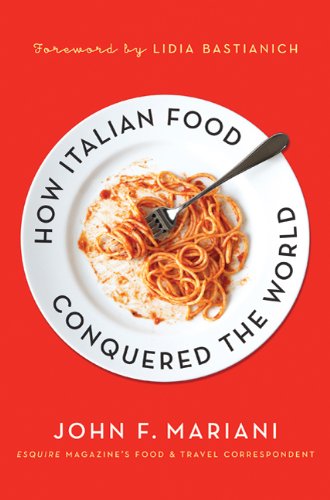MARIANI’S
Virtual
Gourmet
October
12, 2025
NEWSLETTER
ARCHIVE

Mickey Mantle's Restaurant Menu Cover
THIS WEEK
HISPANIC/LATINO FOOD IN THE U.S.
By John Mariani
NEW YORK CORNER
BONNEFONT RESTAURANT
By John Mariani
HÔTEL ALLEMAGNE
CHAPTER THIRTY-ONE
By John Mariani
NOTES FROM THE WINE CELLAR
by Geoff Kalish
By John Mariani

Quintonil in Mexico City
October
is Hispanic Heritage Month, and
Latino food has become one of the driving
forces of American gastro-culture,
with about 11% of all U.S.
restaurants serving Mexican food,
making it the second most popular cuisine
after American food, along with
soaring interest in the food of Peru,
Argentina, Brazil and the Caribbean
islands. I
interviewed some of the best-known
Hispanic-American chefs as to what is
driving a remarkably diverse interest in
Latino food in the U.S. that departs from
the clichés of the past.
 Richard Sandoval,
founder
of Richard Sandoval Hospitality, operates
more
than 60
restaurants in North
America, South America,
Europe, and Asia and is
best known for his fusion of Latin
flavors with modern techniques. He has received Mexico's “National
Toque d'Oro,” Bon Appetit’s
“Restaurateur
of the Year,” and an honorary doctorate
in Culinary Arts from Johnson &
Wales University.
Richard Sandoval,
founder
of Richard Sandoval Hospitality, operates
more
than 60
restaurants in North
America, South America,
Europe, and Asia and is
best known for his fusion of Latin
flavors with modern techniques. He has received Mexico's “National
Toque d'Oro,” Bon Appetit’s
“Restaurateur
of the Year,” and an honorary doctorate
in Culinary Arts from Johnson &
Wales University.
What have been
the most
significant changes and advances in Mexican
cuisine in Mexico in the last ten
years?
I see three
interlocking
developments that are really shaping things:
First, the
elevation of indigenous, native
ingredients and techniques. Restaurants like
Quintonil in Mexico City are
sourcing heirloom vegetables, native herbs,
even insects, from Milpa Alta,
Xochimilco, and other regions, and weaving
them into tasting menus.
Second, global
recognition by media such as Michelin
and World’s 50 Best are pushing
both fine dining and street food.
Third, new formats and
sustainability with a growing attention to
zero waste kitchens and ancestral
agriculture. A recent example is Baldio in
Mexico City, for its commitment to
zero waste, fermenting, using whole animals,
sourcing locally and reviving ancient
farming practices such as chinampas. So
the change is not just more
refined places but deeper, by reconnecting
with native and multi-regional
roots, honoring tradition while innovating,
being judged internationally and
prioritizing sustainability and social
responsibility.
What have been
the most
significant changes and advances in Mexican
cuisine in the USA in the last five
years?
Consumer demand
and
market expansion. There are now more than
80,000 Mexican restaurants in the
U.S., making it the second most popular
cuisine in the country. Growth has been
especially strong among younger adults and
people are increasingly exploring
beyond Tex-Mex and standard Mexican to
authentic regional styles such as
Oaxacan moles, Yucatecan recados
and Baja seafood. It is not just
about taste but about how food is sourced and
the story it carries.
You now have 60
locations. How does the cooking and style
differ from one to another?
Each of my
restaurants
reflects both its location and the regionality
of Mexican food or the culture
behind the menu. No two are the same. For
example, tán in New York (above)
celebrates
the flavors of the Yucatán with cochinita
pibil and recado negro.
Cayao in Los Cabos blends Nikkei traditions,
marrying Peruvian and Japanese
techniques with a coastal Mexican perspective.
Toro Toro brings a broader Latin
steakhouse concept to cities around the world,
while Maya focuses on
traditional Mexican with a modern touch.
 Martha Palacios is
Executive Chef of the restaurant Jarana
Aventura, Florida, owned by Acurio
International. Born in Lima, Peru, she
credits her parents and her grandmothers
from Cuzco and Lima as inspiration. She
spent a decade in Japan learning to fuse
cuisine, which she showcases at
Jarana (below). She
was named “Best Female Chef” in 2022 by El
Comercio, one of
the leading Peruvian newspapers, as well as
the prestigious El Comercio’s
“Light of Commerce Award” in 2018.
Martha Palacios is
Executive Chef of the restaurant Jarana
Aventura, Florida, owned by Acurio
International. Born in Lima, Peru, she
credits her parents and her grandmothers
from Cuzco and Lima as inspiration. She
spent a decade in Japan learning to fuse
cuisine, which she showcases at
Jarana (below). She
was named “Best Female Chef” in 2022 by El
Comercio, one of
the leading Peruvian newspapers, as well as
the prestigious El Comercio’s
“Light of Commerce Award” in 2018.
What is
the connection between Peruvian food and
sushi? The
connection goes beyond
gastronomy. Peru not only embraced Japanese
technique and discipline but also
enriched it with its extraordinary
biodiversity of ingredients and flavors
unique to the world. By respecting the
precision of the cut, the freshness of
the product, and the Japanese philosophy of
highlighting the essence of each
ingredient, Peruvians incorporated local
chiles, citrus fruits, herbs, and
seafood. From this union emerged Nikkei
cuisine, a style that honors Japanese
tradition while celebrating Peru’s sensory
richness. We thus express our
gratitude to Japanese culture and its
immigrants for the invaluable legacy they
left in our country, a legacy that today
shines through every Nikkei dish
recognized around the world.
How has
Peruvian food progressed in Peru itself and
outside?
In Peru,
food has always begun at home, not only to
nourish, but also to share love
through flavor. Today, our country has become
a world-class culinary
destination, with iconic dishes such as
ceviche, proclaimed by UNESCO as
Intangible Cultural Heritage, and living
traditions like our Arequipa
picanterías [a traditional eatery
serving Peruvian soup and main course]. 
This
journey
would not be possible without the fundamental
pillars that sustain and guide
the progress of Peruvian gastronomy:
1.
Defense
of native biodiversity that preserves and
values the unique ingredients offered
by our oceans, mountains, and jungles.
2.
Cultural
diversity – Embracing the wealth of our
ancestral roots and the fusion with
external influences, making our cuisine a
unique mosaic.
3.
Sustainability – Promoting
responsible
practices that respect the environment and
ensure the continuity of
our resources for future generations.
What
are
the essential ingredients that make up
Peruvian food culture?
We are
proud
to have three major ecosystems: coast,
highlands, and jungle. Each region
offers us a different pantry: The coast, with
its generous and fertile ocean; The
highlands, with ancestral grains, tubers,
and herbs; The
jungle, with exotic
fruits, roots, and flavors that amaze the
world. From this diversity emerges a
cuisine that changes from place to place,
making Peruvian gastronomy a true
reflection of our geography and culture.
 Michelle Bernstein of
Miami is founder of Michelle
Bernstein
Catering, Café La Trova, Sra. Martinez, La
Cañita and Sweet Liberty. She is the
daughter
of an
Argentine-Jewish mother and a father with
Russian-Jewish heritage She opened
her first restaurant, Azul, in Miami, then Michy's
in Miami. In 2006, Bernstein won the James Beard Foundation
Award for
best chef in the South in 2008.
Michelle Bernstein of
Miami is founder of Michelle
Bernstein
Catering, Café La Trova, Sra. Martinez, La
Cañita and Sweet Liberty. She is the
daughter
of an
Argentine-Jewish mother and a father with
Russian-Jewish heritage She opened
her first restaurant, Azul, in Miami, then Michy's
in Miami. In 2006, Bernstein won the James Beard Foundation
Award for
best chef in the South in 2008.
I don't consider myself to be an innovator of Floribbean Cuisine. Even though I was born and raised and thoroughly embedded and woven into Miami/Florida and its colorful Latin/Haitian/Caribbean flavor, those who came before me are the architects of what really began as "New World" and "Floribbean Cuisine." I am a student of those mentors, like Mark Militello, Norman Van Aken, Allen Susser and Robin Haas; and one cannot forget the incredible Nuevo Latino flavors of Douglas Rodriguez, whom I have always been a huge fan of.
What
changes in Latino restaurants have you seen
in Miami in the last couple of
years? 
A lot of
Latin restaurants in Miami are experiential,
where before it was all about the
walk-up cafecito window, nibbling on croquetas,
a Cuban sandwich
or creamy flan. Nowadays, the bars are
essential, preparing fresh squeezed lime
for hundreds of orders of Daiquiris and
Mojitos every night. Creativity rules
the day with inventive fillings for croquetas
and empanadas. Traditional
staples are always available including roast lechon
or ropa vieja,
however everything is now a bit more upscale,
more "dressed up" and
has a background of beautiful Latin music
either playing from speakers or live
in front of the crowds. The energy is usually
high and you need to be prepared
to dance. Don't get me wrong, we still have
the old classic Cuban restaurants,
however not many are left that don't provide a
little extra.
How
would
you assess the way Latino restaurants have
pervaded major US cities in the past
five years?
I think
everyone wants to experience the energy,
creativity, and sazon [spice] of
Latin restaurants these days. It's also one of
the fastest growing populations
in the U.S., and you can feel it everywhere.
People want more flavor, more
rhythm and more culture and we intend to serve
them what they want.
NEW YORK CORNER
1
Margaret Corbin Drive
212-740-2939
By John
Mariani

The last time I ate chef Nicole
O’Brien’s
cooking was on the northern boundary of
Manhattan at her restaurant The
Pandering Pig, with just 28 seats, a minuscule
kitchen and a small menu (now
closed). Now, six years later, she is in far
more impressive quarters, the Bonnefont fieldstone cottage built
in
the 1930's for John D. Rockefeller and
designed by the Olmsted Brothers.
The
structure is set within the landscaped greenery of
Fort Tryon Park and the
Cloisters Museum that looks out upon the broad
expanse of the Hudson River. The
restaurant’s name is taken from the exquisite
Bonnefont Cloister and herb
garden (right) at magnificent Cloisters up
the hill. The structure features a
cobblestone exterior, granite archways, and a
slate roof held up
by the oak trusses of the interior's
14-foot
ceilings––all landmarked, allowing O’Brien only to
alter the dining room, which
she has done with applaudable restraint. Tables
are widely set apart, there is
little artwork and there is a lovely shaded garden
area where you may dine for
the time being. The tables themselves have flowers
and a lighted crystal globe.
Only the meeting room-like black chairs seem out
of place.
 I was
luckily there for “Vinyl Wednesday” when the
bartender, Logan Burns, plays his
own stack of 1960s wax, which was the first
restaurant playlist I’ve enjoyed in
twenty years.
I was
luckily there for “Vinyl Wednesday” when the
bartender, Logan Burns, plays his
own stack of 1960s wax, which was the first
restaurant playlist I’ve enjoyed in
twenty years.
O’Brien,
who
grew up in Marin County, has always called her
cooking "FreNoCal,"
which sounds like a soft drink but is an amalgam
of “French Northern
California.”
She had once pursued
a successful career in the arts and film, then
became a private chef for
celebrity clientele whose tastes, she says, could
be “eccentric.” At Bonnefont
she has full freedom to cook as she wishes, and
many of her best dishes
have made the leap from her former restaurant’s
menu. Prices are very
reasonable, with main courses ranging from $18 to
$38.
My family and I began with a
very fine warm vichyssoise with additional
shallots. Roasted Roman dates are
stuffed  with toasted
pine, nuts, garlic, thyme, drizzled with honey. A
liberal
sampling of cheeses and sausages and salami (right)
came on a platter with slices of
very good, crusty bread and butter.
with toasted
pine, nuts, garlic, thyme, drizzled with honey. A
liberal
sampling of cheeses and sausages and salami (right)
came on a platter with slices of
very good, crusty bread and butter.
The Bonnefont herbal salad
is made with dill-strewn radishes
and
toasted sunflower and pumpkin seeds in a Sherry
dressing.
 One of the prized dishes
from The Pampered Pig is her coq au vin, which
O’Brien marinates for hours in
red wine, slowly cooked to ideal tenderness and
served over polenta with melted blue
cheese. Another is her very winey
boeuf à la bourguignon (left)
abundant with early autumn vegetables and brought
steaming to the table.
One of the prized dishes
from The Pampered Pig is her coq au vin, which
O’Brien marinates for hours in
red wine, slowly cooked to ideal tenderness and
served over polenta with melted blue
cheese. Another is her very winey
boeuf à la bourguignon (left)
abundant with early autumn vegetables and brought
steaming to the table.
Unexpected was an abundant
Asian-style bowl of noodles cooked in
coconut butter with tangled carrots,
zucchini, bell pepper, scallions
and garlic and laced with peanut butter, soy,
butter and coconut.
The only disappointment was
a night’s special of grilled Montauk striped bass
whose flesh tasted somewhat muddy.
It came atop a potato-leek puree.
The men also has a “Menu
pour Les Enfants” that include a deliciously rich
mac-and-cheese my
grandchildren had to battle us adults for (right).
 Desserts
are wholly apt for the restaurant, like a dreamy
chocolate
nuage and a moist brownie with the ice
cream scooped from the weekend
ice cream shop below.
Desserts
are wholly apt for the restaurant, like a dreamy
chocolate
nuage and a moist brownie with the ice
cream scooped from the weekend
ice cream shop below.
Bonnefont wine
list is neither long nor very
interesting, but prices are almost all under $100
per bottle and most labels available
as half-bottles.
But the selection
of unusual liquors and small craft
beers anchors the charming bar up front.
Bonnefont
is truly a
retreat, just as the Cloisters were once for
French nuns, only the food and
wine are of a more liberal and savory style. To
visit the Cloisters, which
close at five PM, then dine here amidst the ever
growing greenery in view of
what Henry James called “America’s great
romantic stream” is a unique
experience in Manhattan, as far away from its
hip-hooray and ballyhoo as it is
possible to get.
Open
for dinner Wed.-Sun.; lunch
Wed.-Fri.; Brunch Sat. & Sun.
HÔTEL ALLEMAGNE
By John Mariani

After the interview, which lasted
until the late afternoon and was schedule to
resume the following morning, Borel called
David and shared all the news; David, in turn,
shared it with Katie and Catherine.
Bazarov said that the orders to attack
the hotels came directly from the Kremlin, and
that the virus would be made available for him
to pick up in Ankara. The Russians said they had
made all the arrangement in Marseilles and with
the Syrians; Bazarov would be in charge of
hiring Massot in Paris. In Marseilles contacts
were made with the Unione, which for an
exorbitant fee—Bazarov did not know the
amount—they assigned the job to Marciano, who
was deeply in debt to the mob. The Unione
told the Russians they did not wish to know any
of the details of the operation, only
guaranteeing Marciano’s strict adherence to the
plan.
The Syrian government was only too happy
to assist the Russians in the operation in an
effort to embarrass the Saudis, assigning Salah
to the job. He met with Bazarov in Paris, also
without knowing more than the operational
details of the attack. Massot had, apparently,
been used by the Russians for delivery jobs,
nothing bigger than dropping off passports and
various documents.
The Sûreté had asked Bazarov what the
Putin connection was and why he would want to
poison three Paris hotels. Bazarov said he’d
never spoken directly to Putin but that the
President’s people made it very clear the orders
were from the top. The reason, Bazarov
speculated, was that Putin wanted a Russian
presence in the Paris hotel scene, both for
prestige and for the enormous profits they could
provide. Embarrassing the Saudis was of only
secondary importance, but Putin knew that would
further cement relations with both Syria and
Iran in the Middle East, whose own officials
would receive the V.I.P. treatment in the hotels
they could never have hoped to get from Saudi
hoteliers.
Putin was willing to wait for
however long it took to completely clean the
hotels, watch how long the taint of the virus
lingered in the public’s eye, then, knowing that
the Saudis had no patience in such matters and
sought profitability from a property as soon as
possible, make a rock-bottom offer through a shell
company to buy the three of them for one price.
Putin’s name would be nowhere on the sale
documents, but, in fact, he would be taking in
profits when the hotels regained their reputation.
The wonderful aspect of such a deal was that so
much Saudi money had been poured into the hotels
when they were being renovated that not a single
ruble would have to spent on new furnishings.
It was a very neat
scheme, though wholly dependent on the French and
Saudis never finding the culprits in the crime. In
fact, Bazarov was informed that Sallah was
expected to return to Damascus days after the
attack, and Marciano was already back in
Marseilles. The
fact that the three perpetrators plus Bazarov had
been exposed now meant that there was no hope the
Saudis would ever sell the hotels to the Russians.
There would always be a buyer for such deluxe
properties, even if the Saudis had to wait for one
months in the future.
Catherine held onto the news Borel had
asked her to embargo till the end of the week,
when the Sûreté and DGSI had readied a public
report. Katie and David, who had pretty much come
to the end of their vacation time in Paris, called
Alan Dobell to tell him all that had occurred and
agreed that it was time to return to the States,
where Katie could keep track of how the story
would develop from there. At some point, after
arraignments and charges against the three
perpetrators were formalized, Bazarov’s
involvement would be announced, then the tricky
part of granting him asylum and diplomatic
immunity in the face of public outrage would be
hammered out.
The assertions made by Bazarov about Putin
would, of course, be peppered with the phrase
“alleged participation,” knowing that it would be
denied by the Kremlin and that Putin had little
fear of reprisals against him in Russia, though it
would not be well received in the Kremlin.

The three Americans
had one last meal together at Jacques’s
restaurant, congratulating themselves on their
participation in solving the crimes, which was
certainly going to put Catherine in a new light at
CNN. Katie
would try to turn their story—attempted kidnapping
and all—into a McClure’s article in the
months to come.
Katie and David would be leaving the next
day, but, with the help of Jacques, managed to
obtain a reservation at Le Grand Véfour (above),
as they’d promised themselves. Katie had bought a
new dress for the occasion—going the safe route
with a slender black dress cut out in the back and
a thin sash around the waist. David, feeling
resplendent in his
new jacket, even bought a new white shirt
and a knock-off of a silver-blue Hermès tie with a
very small, very discreet horseshoe print.
 Le Grand Véfour was everything they hoped
it would be and more—especially the final bill,
which came out to more than $600. The restaurant
was the most historic in Paris: The space had once
served as headquarters for the revolutionaries and
meeting place for the organizers of the Reign of
Terror.
Le Grand Véfour was everything they hoped
it would be and more—especially the final bill,
which came out to more than $600. The restaurant
was the most historic in Paris: The space had once
served as headquarters for the revolutionaries and
meeting place for the organizers of the Reign of
Terror. Napoleon ate there with Josephine—the table is
still there for all to see—and by the end of the
19th century it had acquired a
mirrored, neo-Pompeian décor of stunning opulence
impeccably maintained into the 21st
century.
Napoleon ate there with Josephine—the table is
still there for all to see—and by the end of the
19th century it had acquired a
mirrored, neo-Pompeian décor of stunning opulence
impeccably maintained into the 21st
century.
Katie and
David went with the restaurant’s “classics,” like
foie-and-duck gras-stuffed ravioli in a foamy
cream sauce; a cauliflower soup with haddock; and
squab “Prince Rainier III,” with a bitter
chocolate mousse for dessert. It was a long,
enchanted evening, and, with Katie so beautifully
dressed and speaking French, the service could not
have been more cordial and attentive.
“So, au
revoir to Paris for a while,” said Katie,
lifting her glass of Champagne.
"And back to the Bronx
and the Hudson River," replied David. "Y'know,
I've gotten to really love this city, but I miss
my little house on the river, which by now must be
overgrown with giant hogweed."
"I'm a little homesick,
too," said Katie, "but if I could stay here
another two weeks, I would not hate it. Maybe I'll
have to come back to finish the story."
David didn't say what
he'd like to have said, that he love coming back
to Paris with Her. Instead, he just said you never
know.
© John Mariani, 2024
❖❖❖
Some
Interesting Wines to Match With Fall Fare
by Geoff
Kalish

PIETER BRUEGEL, "THE HARVESTERS"
As
we
slowly transition through the warmth of early fall
to the chill of winter,
seasonal fare progresses from favorites like
hamburgers and pasta
primavera that mate well with easy-drinking
wines emanating fruity,
flowery bouquets and low-tannin taste to
classics like grilled game birds and pasta with
eggplant that match best with
reds and whites showing more muted fruity flavors
and often hints of spice and
herbs in their finish. While many wines are
available to adequately accompany
the fare of fall, at some recent tastings I’ve
found a number of reasonably-priced
reds and whites from “off the beaten track that
more than fill the bill and
offer some interesting wine-food flavor
combinations.
WHITES
 2024
Marcel Bubois Vouvray ($15). Made from Chenin Blanc
grapes grown in France’s
Loire Valley, this wine shows a fragrant bouquet and
slightly sweet taste of
peaches and pineapple, with a crisp finish of pears
and lemon zest. It mates
well with shrimp scampi and grilled octopus as well
as baked acorn and Delicato
squash.
2024
Marcel Bubois Vouvray ($15). Made from Chenin Blanc
grapes grown in France’s
Loire Valley, this wine shows a fragrant bouquet and
slightly sweet taste of
peaches and pineapple, with a crisp finish of pears
and lemon zest. It mates
well with shrimp scampi and grilled octopus as well
as baked acorn and Delicato
squash.
2024
Seehof
Feinherb Riesling ($21).
This import from the
Westhoffen area of the Rheinhessen has a fragrant
bouquet and slightly sweet
taste of honeysuckle and peaches with notes of
grapefruit in its finish. It
makes a zesty mate for sushi, tuna tartar and
grilled salmon as well as Caesar
salad and Thai classics like pad Thai and shrimp in
green curry sauce.
2024
Pine
Ridge Chenin Blanc/Viognier ($16).
Showing
a mix of tropical fruit and a distinct taste of ripe
pears, this unusual blend
of 80% Chenin Blanc and 20% Viognier, from
well-known and remote areas of Napa
Valley, has a crisp finish that is ideal to mate
with spicy fare like Buffalo
chicken wings, Korean kimchi and Indian Vindaloo.
REDS

2023
Elena Walch Schiwa
($22). Hailing from vineyards on the steep slopes
Alto
Adige, in northeastern Italy, this lively red shows
a
bouquet and taste of ripe cherries and strawberries
with notes of almond in its
smooth finish. It mates well with brisket of beef,
spaghetti with meatballs and
veal Marsala. 
2022
La
Atalaya Del Comino ($17). This wine was fashioned
from a blend of Garnacha
Tintorera (85%) and Monastrell (15%) grown in
western Spain. Following harvest
the two varietals were fermented separately in
stainless-steel tanks and aged
in French oak (for 12 months), then blended. The
result is a wine that has a
fruity bouquet and taste of plums and black cherries
with notes of green herbs
and a hint of licorice in its long finish. It
provides excellent accompaniment
to baked chicken, salmon with chimichurri sauce and
grilled or broiled
swordfish.
 2023 G.
Descombes Morgon ($25). This Cru Beaujolais was
made from premium Gamay
grapes from around the eastern French village of
Morgon that were fermented
partially by carbonic maceration (addition of carbon
dioxide to a closed tank
containing the grapes) and then aged in concrete
tanks. The result is a red
with a vibrant bouquet and taste of ripe cherries
and raspberries with hints of
orange and thyme in its finish ideal to marry with
baked chicken, turkey and
veal dishes.
2023 G.
Descombes Morgon ($25). This Cru Beaujolais was
made from premium Gamay
grapes from around the eastern French village of
Morgon that were fermented
partially by carbonic maceration (addition of carbon
dioxide to a closed tank
containing the grapes) and then aged in concrete
tanks. The result is a red
with a vibrant bouquet and taste of ripe cherries
and raspberries with hints of
orange and thyme in its finish ideal to marry with
baked chicken, turkey and
veal dishes.
2023
Château
Thivin Côte de Brouilly ($35).
Made from organically-grown
grapes on Mount Brouilly, in eastern France, this
elegant red shows a bouquet
and taste of ripe strawberries and plums with notes
of cranberry. It pairs well
with duck paté and baked brie as well as roasted
turkey and braised brisket of
beef.
2021
Kris
Pinot Noir ($12). Don’t be put off by the
screw top or that this
Pinot Noir comes from Italy––not renowned for wines
from the Pinot Noir (pinot
nero) grape––made from grapes grown on hillside
vineyards, this red shows an
elegant bouquet and taste of ripe plums and
blackberries, with notes of cherry
and hints of thyme in its finish. Marry it with
pasta with eggplant, veal
Parmigiana and grilled duck breasts as well as
“hard” aged cheeses like cheddar
and Gouda.
❖❖❖

SAVE THE BONES FOR HENRY JONES!
"I was delighted to read that men still order steak to impress women on a date. I had worried that this sort of harmless (unless you’re a cow), loveable food machismo was dying out among younger chaps. But no, apparently not."–Robert Crampton London Times (Oct 7).
❖❖❖
Any of John Mariani's books below may be ordered from amazon.com.
 The Hound in Heaven
(21st Century Lion Books) is a novella, and
for anyone who loves dogs, Christmas, romance,
inspiration, even the supernatural, I hope you'll find
this to be a treasured favorite. The story
concerns how, after a New England teacher, his wife and
their two daughters adopt a stray puppy found in their
barn in northern Maine, their lives seem full of promise.
But when tragedy strikes, their wonderful dog Lazarus and
the spirit of Christmas are the only things that may bring
his master back from the edge of despair.
The Hound in Heaven
(21st Century Lion Books) is a novella, and
for anyone who loves dogs, Christmas, romance,
inspiration, even the supernatural, I hope you'll find
this to be a treasured favorite. The story
concerns how, after a New England teacher, his wife and
their two daughters adopt a stray puppy found in their
barn in northern Maine, their lives seem full of promise.
But when tragedy strikes, their wonderful dog Lazarus and
the spirit of Christmas are the only things that may bring
his master back from the edge of despair. WATCH THE VIDEO!
“What a huge surprise turn this story took! I was completely stunned! I truly enjoyed this book and its message.” – Actress Ali MacGraw
“He had me at Page One. The amount of heart, human insight, soul searching, and deft literary strength that John Mariani pours into this airtight novella is vertigo-inducing. Perhaps ‘wow’ would be the best comment.” – James Dalessandro, author of Bohemian Heart and 1906.
“John Mariani’s Hound in Heaven starts with a well-painted portrayal of an American family, along with the requisite dog. A surprise event flips the action of the novel and captures us for a voyage leading to a hopeful and heart-warming message. A page turning, one sitting read, it’s the perfect antidote for the winter and promotion of holiday celebration.” – Ann Pearlman, author of The Christmas Cookie Club and A Gift for my Sister.
“John Mariani’s concise, achingly beautiful novella pulls a literary rabbit out of a hat – a mash-up of the cosmic and the intimate, the tragic and the heart-warming – a Christmas tale for all ages, and all faiths. Read it to your children, read it to yourself… but read it. Early and often. Highly recommended.” – Jay Bonansinga, New York Times bestselling author of Pinkerton’s War, The Sinking of The Eastland, and The Walking Dead: The Road To Woodbury.
“Amazing things happen when you open your heart to an animal. The Hound in Heaven delivers a powerful story of healing that is forged in the spiritual relationship between a man and his best friend. The book brings a message of hope that can enrich our images of family, love, and loss.” – Dr. Barbara Royal, author of The Royal Treatment.
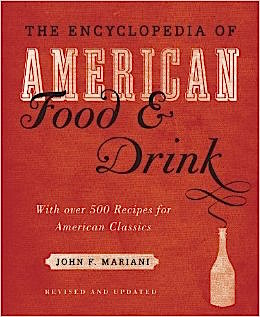 |
The Encyclopedia of American Food and Drink by John F. Mariani (Bloomsbury USA, $35) Modesty forbids me to praise my own new book, but let me proudly say that it is an extensive revision of the 4th edition that appeared more than a decade ago, before locavores, molecular cuisine, modernist cuisine, the Food Network and so much more, now included. Word origins have been completely updated, as have per capita consumption and production stats. Most important, for the first time since publication in the 1980s, the book includes more than 100 biographies of Americans who have changed the way we cook, eat and drink -- from Fannie Farmer and Julia Child to Robert Mondavi and Thomas Keller. "This book is amazing! It has entries for everything from `abalone' to `zwieback,' plus more than 500 recipes for classic American dishes and drinks."--Devra First, The Boston Globe. "Much needed in any kitchen library."--Bon Appetit. |
"Eating Italian will never be the same after reading John Mariani's entertaining and savory gastronomical history of the cuisine of Italy and how it won over appetites worldwide. . . . This book is such a tasteful narrative that it will literally make you hungry for Italian food and arouse your appetite for gastronomical history."--Don Oldenburg, USA Today. "Italian
restaurants--some good, some glitzy--far
outnumber their French rivals. Many of
these establishments are zestfully described
in How Italian Food Conquered the World, an
entertaining and fact-filled chronicle by
food-and-wine correspondent John F.
Mariani."--Aram Bakshian Jr., Wall Street
Journal.
"Equal parts
history, sociology, gastronomy, and just
plain fun, How Italian Food Conquered the
World tells the captivating and delicious
story of the (let's face it) everybody's
favorite cuisine with clarity, verve and
more than one surprise."--Colman Andrews,
editorial director of The Daily
Meal.com. "A fantastic and fascinating
read, covering everything from the influence
of Venice's spice trade to the impact of
Italian immigrants in America and the
evolution of alta cucina. This book will
serve as a terrific resource to anyone
interested in the real story of Italian
food."--Mary Ann Esposito, host of PBS-TV's
Ciao
Italia. "John Mariani has written the
definitive history of how Italians won their
way into our hearts, minds, and
stomachs. It's a story of pleasure over
pomp and taste over technique."--Danny Meyer,
owner of NYC restaurants Union Square
Cafe, The Modern, and Maialino.
|
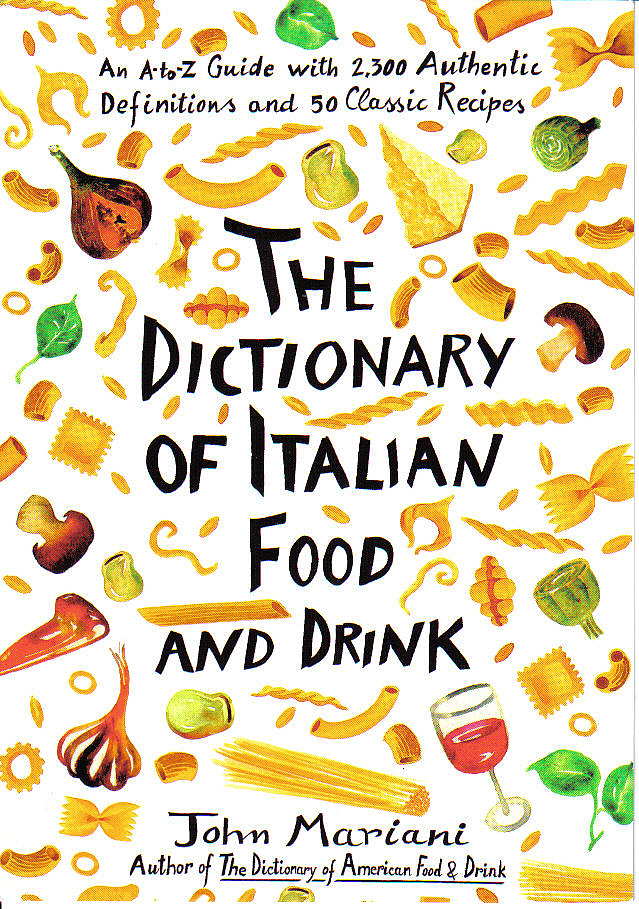 |
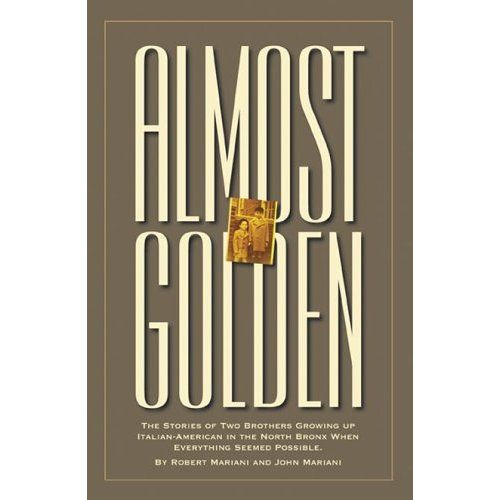 |
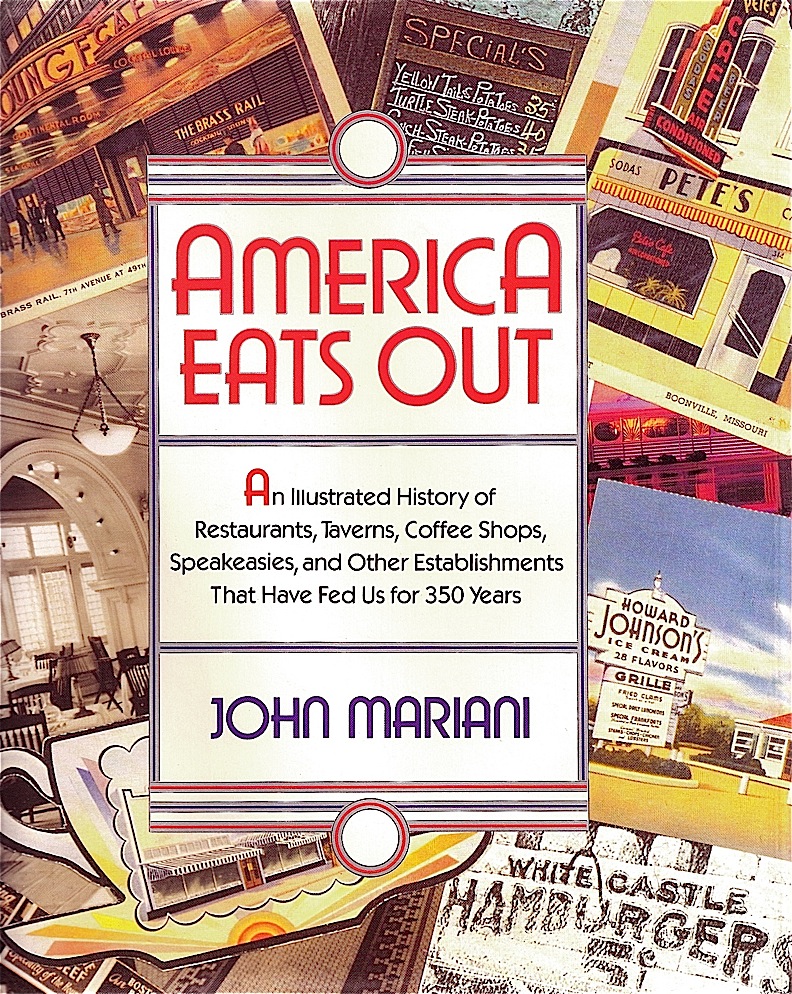 |
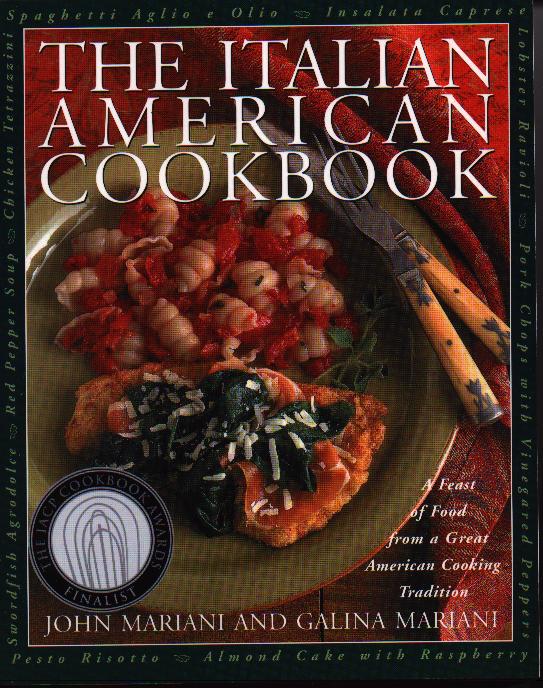 |
 |
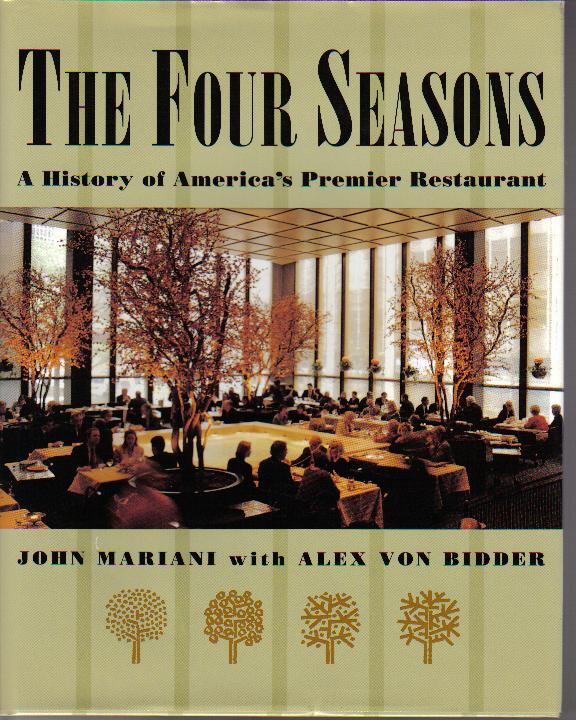 |
MARIANI'S VIRTUAL GOURMET
NEWSLETTER is published weekly. Publisher: John Mariani. Editor: Walter Bagley. Contributing Writers: Christopher
Mariani, Misha Mariani, John A. Curtas, Gerry Dawes, Geoff Kalish.
Contributing
Photographer: Galina Dargery. Technical
Advisor: Gerry
McLoughlin.
If you wish to subscribe to this
newsletter, please click here: http://www.johnmariani.com/subscribe/index.html
© copyright John Mariani 2025
